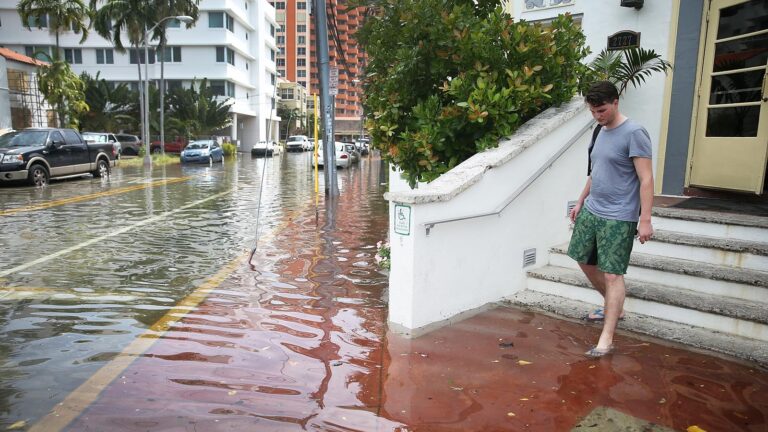Photo: A hotel guest steps out of a hotel into a flooded street in Miami Beach, Fla., on September 29, 2015, during high tide flooding caused by sea level rise and the lunar king tides. (Image credit: Joe Raedle/Getty Images )
The modern era of human-caused climate change — the Anthropocene — has also been called the Pyrocene because we’ve entered an age of fire, characterized by large wildfires of increasing size, intensity, and duration. But we propose another term for the modern era: the Aquacene, a time of rapidly increasing flooding from sea level rise and heavier precipitation events, because of human-caused climate change, which will drive millions of people from their homes and fundamentally alter society.
In part one of this multipart series on understanding your flood risk in the changing climate, we will look at what sea level rise is doing today — with a hint of the dangers ahead. Part two will review eight great books that look at the increasing flood risks in some of the most endangered U.S. places: Miami, New York City, New Jersey, Charleston, Norfolk, Houston, New Orleans, Houston, and the Florida Keys. Part three will provide tools to evaluate future flood risk.

The rate of sea level rise depends on your location
Sea levels are rising at different rates in different places. Globally averaged sea level has risen about 6.7 inches (170 mm) over the past 100 years (1920-2020); over the same period, the contiguous U.S. sea level has risen about 11 inches (280 mm).
Tide gauges provide the longest-running data set for measuring sea level rise, with many locations offering over a century of data. NOAA’s excellent Tides&Currents website has current tide gauge water levels for U.S. locations and a Sea Level Trends page with plots of historic global sea level rise at tide gauges. The figures they give are for […]
Full article: yaleclimateconnections.org

